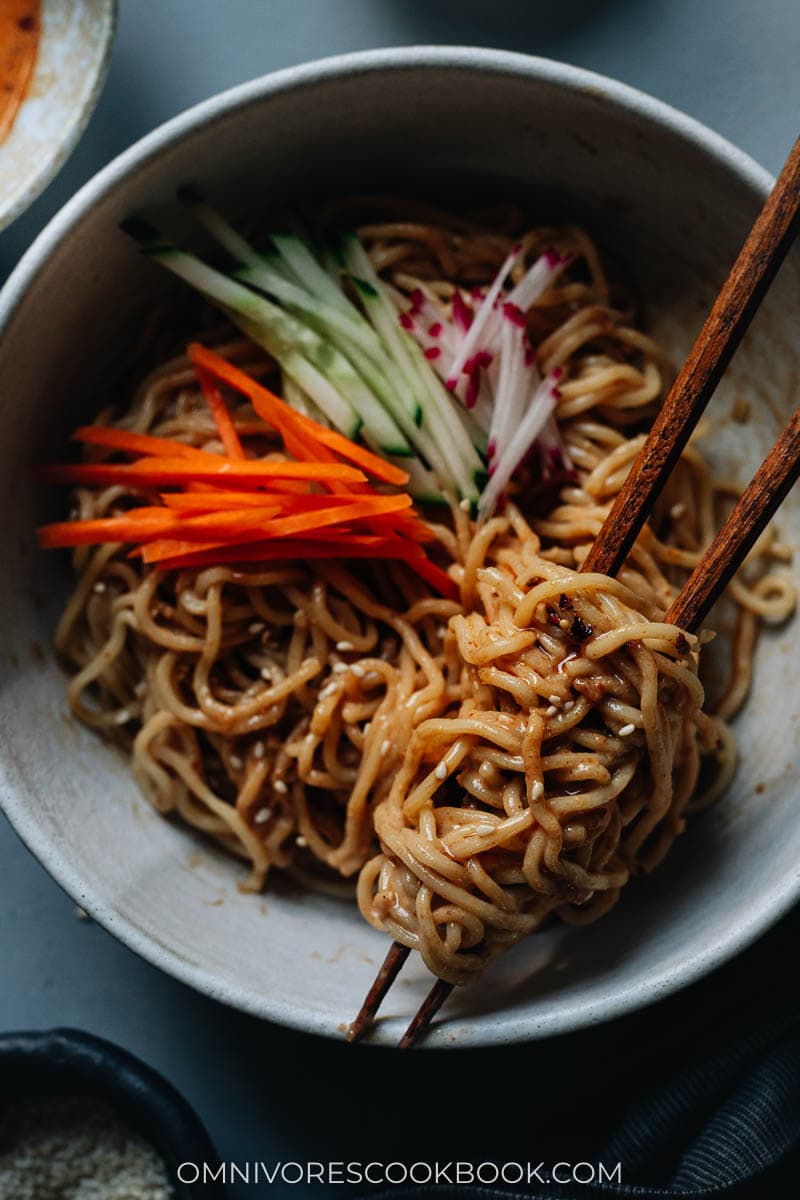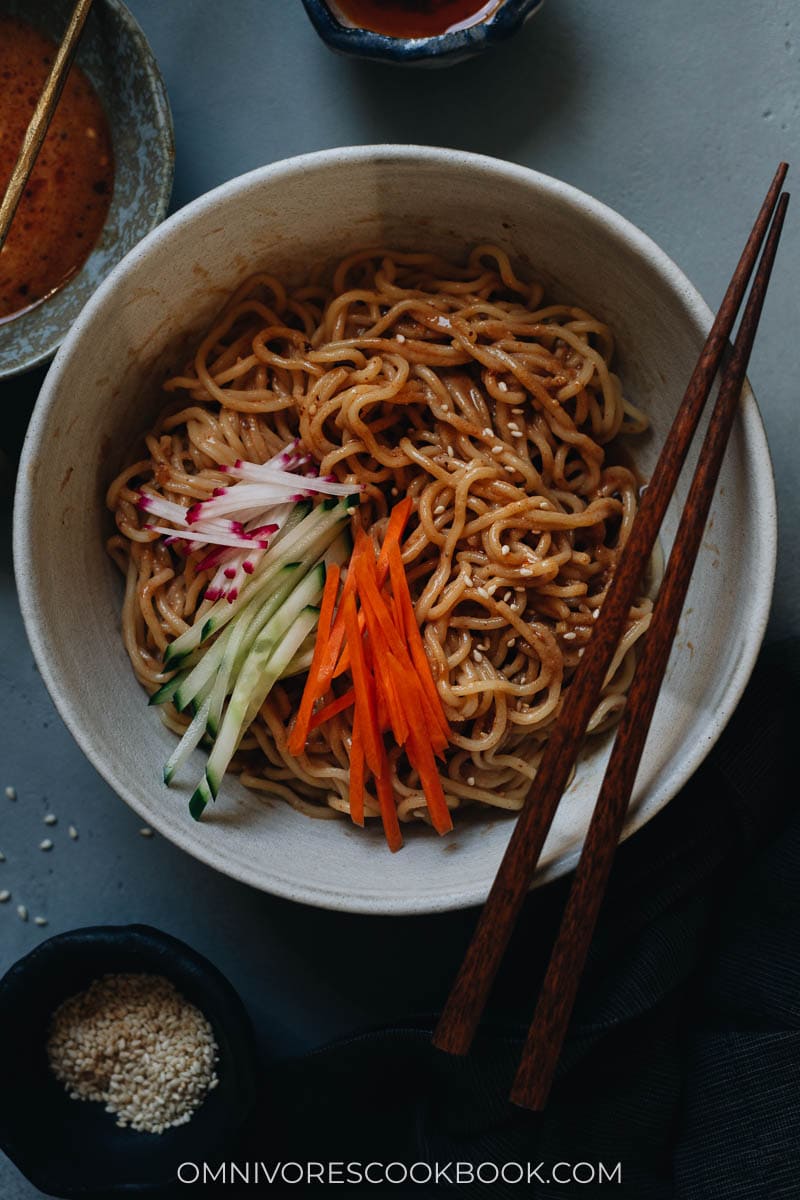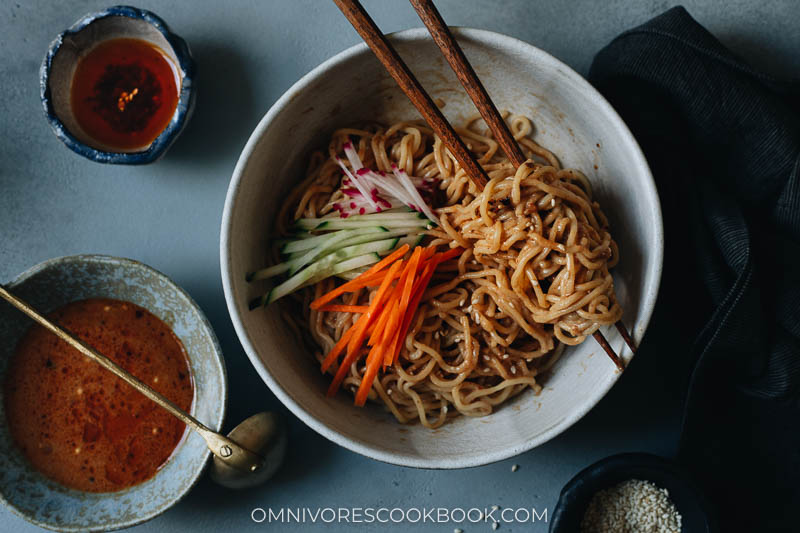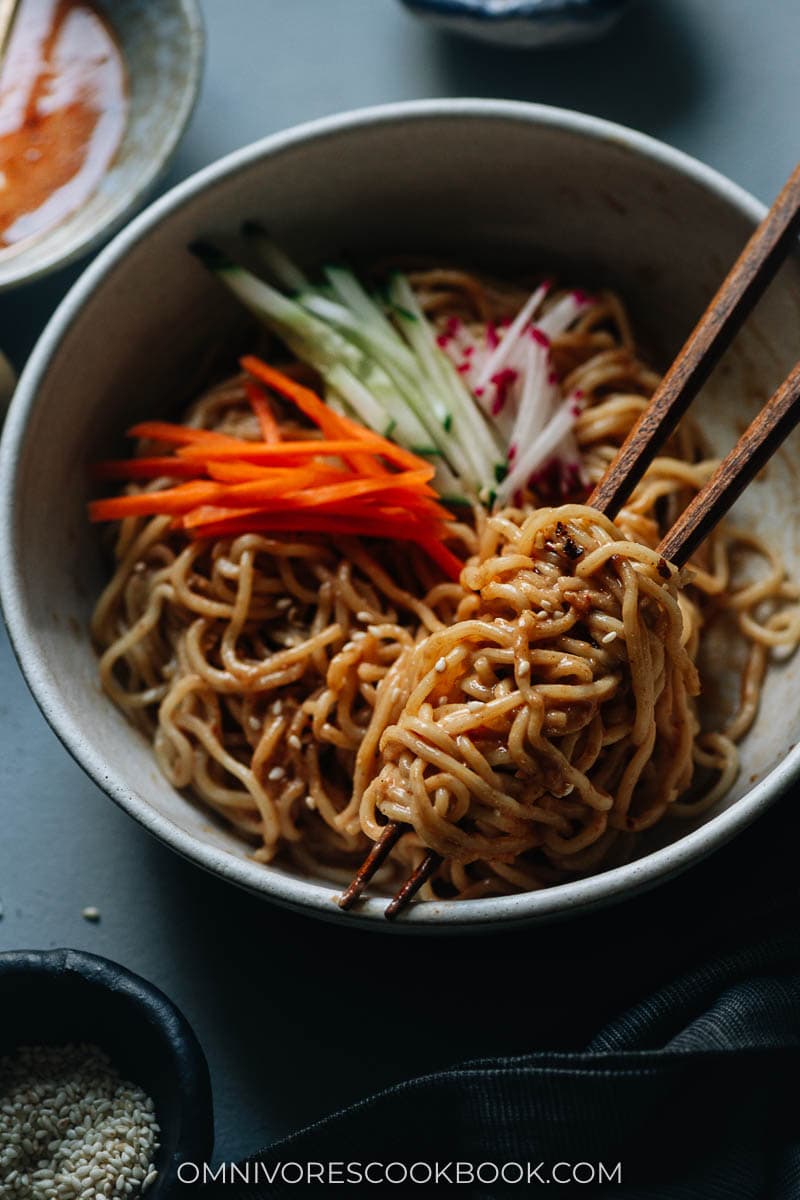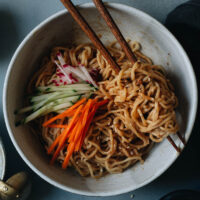Sesame Noodles: A Symphony of Flavor
Sometimes I hear complaints that Chinese recipes tend to have super long ingredient lists, which scare people away. I couldn’t agree more. The fact is that Chinese cuisine is really good at playing with flavors. It brings together herbs, fermented sauces, and many ingredients that are sweet, salty, sour, and nutty to play a symphony. The tones and rhythms all come together, to create a beautiful melody. Everything is balanced, without a single ingredient jumping out or screaming loudly.
A Lot of Ingredients, Very Easy to Make
For “poor folks’ food” like noodles, the idea is to use the cheapest ingredients to maximize flavor. The goal is to make you happy with a stomach full of noodles, vegetables, and a minimal amount of meat (or no meat at all). A simple sesame noodle dish requires more than 10 ingredients to achieve this goal. In fact, if you count the ingredients needed to make the chili oil, you’ll need about 20 in total. Sometimes I try to simplify recipes as much as I can, so you can actually make them at home. But in this case, I’d say you need the whole set of ingredients if you want the sauce to be interesting and not just taste like peanut butter.
The Sesame Noodle Sauce isn’t Just for Noodles!
The flip side is that you can make more sauce ahead of time, store it in the fridge, and serve it during the week. For example,
Make Your Own Chili Oil if You Can
The secret ingredients in this recipe are the homemade chili oil and roasted Sichuan peppercorn powder. When I serve this dish at cooking classes and events, I always sneak these two in there so that the noodles will wow everyone. With these ingredients, you can turn “just your average sesame noodles” into “OMG this is so good”.
How to Serve Sesame Noodles
You can serve sesame noodles either as an appetizer or a main dish. They are easy to prepare ahead of time and the sauce only gets better after it has been in the fridge a few hours. I might skip (or use very minimal) toppings on the noodles to keep them simple as an appetizer. On the other hand, you can add other things to make it a full meal. For example, leftover shredded meat, sliced avocado, eggs (boiled, poached, or fried), and more vegetables. In this case, make more sauce accordingly.
Better Too Much Sauce Than Too Little
The last thing I want to emphasize is to always make more sauce than you expect you’ll need. The problem with noodle salad is that you never get the exact amount of sauce correct. Every type and brand of noodles absorbs water and sauce in a different rate. Plus, you might want a bit of extra sauce on the side. The sauce in this recipe is plenty for two big servings or four small servings. But you won’t regret making a double batch in any case. I hope you enjoy!
